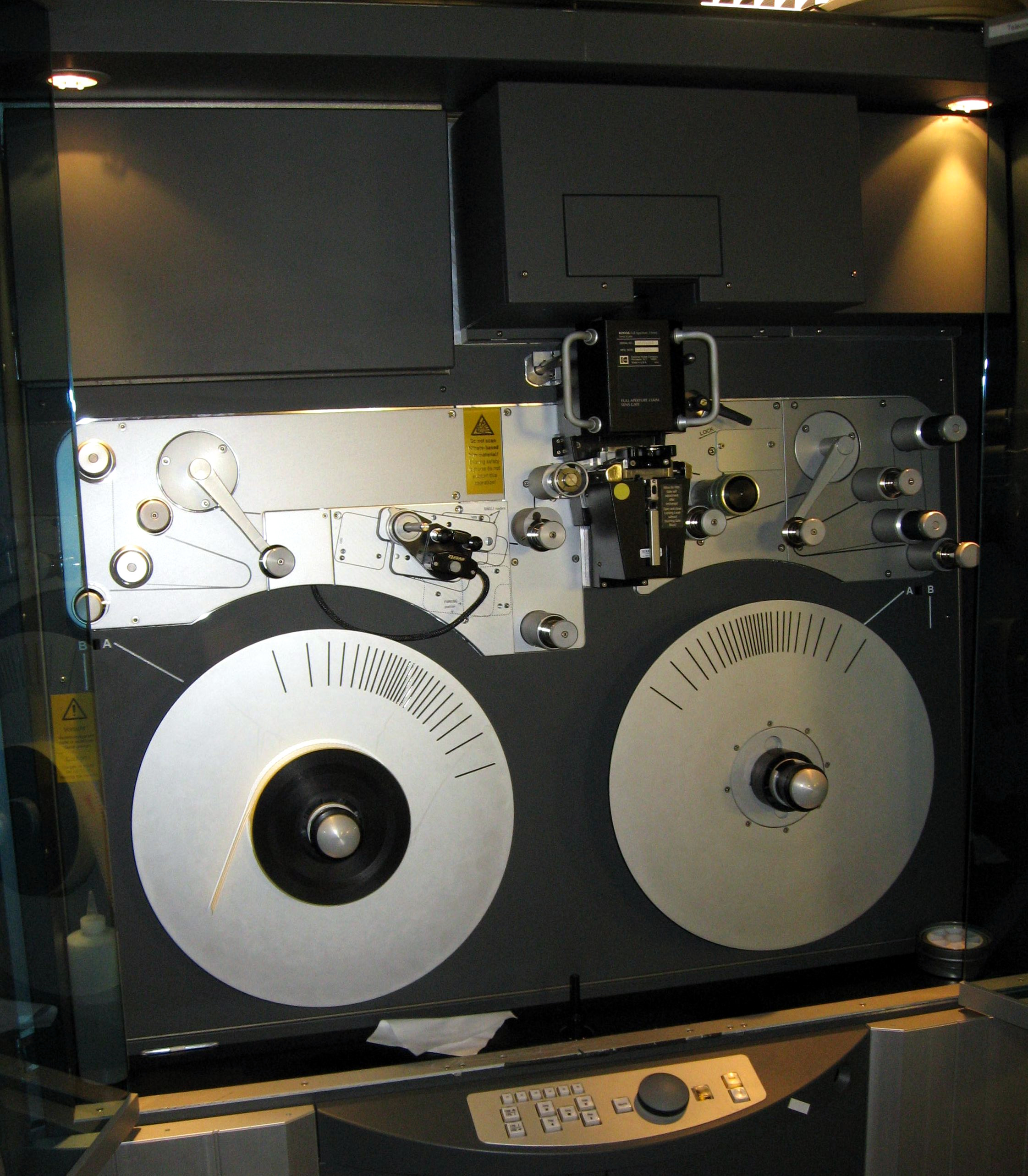|
Line Doubler
A line doubler is a device or algorithm used to deinterlace video signals prior to display on a progressive scan display. The main function of a deinterlacer is to take an interlaced video frame which consists of 60 two-field interlaced fields of an NTSC analogue video signal or 50 fields of a PAL signal, and create a progressive scan output. Cathode ray tube (CRT) based displays (both direct-view and projection) are capable of directly displaying both interlaced and progressive video, and therefore the line-doubling process is an optional step to enhance picture quality. Other types of displays are fixed pixel displays, including LCD displays, plasma displays, DLP projectors, and OLED displays, are not scanned from top left to bottom right corners and generally cannot accept an interlaced signal ''directly'', and so require some kind of deinterlacing. Often, this is built in to the display and transparent to the user. Progressive scan DVD players also feature a deinterlacer. ... [...More Info...] [...Related Items...] OR: [Wikipedia] [Google] [Baidu] |
Deinterlace
Deinterlacing is the process of converting interlaced video into a non-interlaced or Progressive scan, progressive form. Interlaced video signals are commonly found in analog television, digital television (HDTV) when in the 1080i format, some DVD titles, and a smaller number of Blu-ray discs. An interlaced video frame consists of two Video field, fields taken in sequence: the first containing all the odd lines of the image, and the second all the even lines. Analog television employed this technique because it allowed for less transmission bandwidth while keeping a high frame rate for smoother and more life-like motion. A non-interlaced (or progressive scan) signal that uses the same bandwidth only updates the display half as often and was found to create a perceived flicker or stutter. CRT-based displays were able to display interlaced video correctly due to their complete analog nature, blending in the alternating lines seamlessly. However, since the early 2000s, displays such ... [...More Info...] [...Related Items...] OR: [Wikipedia] [Google] [Baidu] |
Telecine
Telecine ( or ) is the process of transferring film into video and is performed in a color suite. The term is also used to refer to the equipment used in the post-production process. Telecine enables a motion picture, captured originally on film stock, to be viewed with standard video equipment, such as television sets, video cassette recorders (VCR), DVD, Blu-ray Disc or computers. Initially, this allowed television broadcasters to produce programs using film, usually 16mm stock, but transmit them in the same format, and quality, as other forms of television production. Furthermore, telecine allows film producers, television producers and film distributors working in the film industry to release their productions on video and allows producers to use video production equipment to complete their filmmaking projects. Within the film industry, it is also referred to as a TK, because TC is already used to designate timecode. Motion picture film scanners are similar to telec ... [...More Info...] [...Related Items...] OR: [Wikipedia] [Google] [Baidu] |
Input Lag
Input lag or input latency is the amount of time that passes between sending an electrical signal and the occurrence of a corresponding action. In video games the term is often used to describe any latency between an input and either the game or the display reacting to that input, despite the fact that this may emerge from a combination of input and output lag. Potential causes of delay from pressing a button to the game reacting The potential causes for "input lag"- according to the second definition- are described below (steps which have negligible contributions to the input lag have been omitted). Each step in the process increases "input lag", however the net result may be unnoticeable if the overall "input lag" is low enough. Controller sends signal to console For wired controllers, this lag is negligible. For wireless controllers, opinions vary as to the significance of this lag. Some people claim to notice extra lag when using a wireless controller, while other people claim ... [...More Info...] [...Related Items...] OR: [Wikipedia] [Google] [Baidu] |
Retrogaming
Retrogaming, also known as classic gaming and old school gaming, is the current playing and collection of obsolete personal computers, consoles, and video games. Usually, retrogaming is based upon systems that are outmoded or discontinued, although ported retrogaming allows games to be played on modern hardware via ports or compilations. It is typically for nostalgia, preservation, or authenticity. A new game could be retro styled, such as an RPG with turn-based combat and pixel art in isometric camera perspective. Retrogaming has existed since the early years of the video game industry, and was popularized with the Internet and emulation technology. It is argued that the main reasons players are drawn to retrogames are nostalgia for different eras, the idea that classic games are more innovative and original, and the simplicity of the games. Retrogaming and retrocomputing have been described as preservation activity and as aspects of the remix culture. Etymology The ... [...More Info...] [...Related Items...] OR: [Wikipedia] [Google] [Baidu] |
Video Game Consoles
A video game console is an electronic device that outputs a video signal or image to display a video game that can be played with a game controller. These may be home consoles, which are generally placed in a permanent location connected to a television or other display devices and controlled with a separate game controller, or handheld consoles, which include their own display unit and controller functions built into the unit and which can be played anywhere. Hybrid consoles combine elements of both home and handheld consoles. Video game consoles are a specialized form of a home computer geared towards video game playing, designed with affordability and accessibility to the general public in mind, but lacking in raw computing power and customization. Simplicity is achieved in part through the use of game cartridges or other simplified methods of distribution, easing the effort of launching a game. However, this leads to ubiquitous proprietary formats that creates competiti ... [...More Info...] [...Related Items...] OR: [Wikipedia] [Google] [Baidu] |
Video Scaler
A video scaler is a system which converts video signals from one display resolution to another; typically, scalers are used to convert a signal from a lower resolution (such as 480p standard definition) to a higher resolution (such as 1080i high definition), a process known as "upconversion" or "upscaling" (by contrast, converting from high to low resolution is known as "downconversion" or "downscaling"). Video scalers are typically found inside consumer electronics devices such as televisions, video game consoles, and DVD or Blu-ray players, but can also be found in other AV equipment (such as video editing and television broadcasting equipment). Video scalers can also be a completely separate devices, often providing simple video switching capabilities. These units are commonly found as part of home theatre or projected presentation systems. They are often combined with other video processing devices or algorithms to create a video processor that improves the apparent d ... [...More Info...] [...Related Items...] OR: [Wikipedia] [Google] [Baidu] |
Scanline
A scan line (also scanline) is one line, or row, in a raster scanning pattern, such as a line of video on a cathode ray tube (CRT) display of a television set or computer monitor. On CRT screens the horizontal scan lines are visually discernible, even when viewed from a distance, as alternating colored lines and black lines, especially when a progressive scan signal with below maximum vertical resolution is displayed. This is sometimes used today as a visual effect in computer graphics. The term is used, by analogy, for a single row of pixels in a raster graphics image. Scan lines are important in representations of image data, because many image file formats have special rules for data at the end of a scan line. For example, there may be a rule that each scan line starts on a particular boundary (such as a byte or word; see for example BMP file format). This means that even otherwise compatible raster data may need to be analyzed at the level of scan lines in order to convert b ... [...More Info...] [...Related Items...] OR: [Wikipedia] [Google] [Baidu] |
Progressive Scan
Progressive scanning (alternatively referred to as noninterlaced scanning) is a format of displaying, storing, or transmitting moving images in which all the lines of each frame are drawn in sequence. This is in contrast to interlaced video used in traditional analog television systems where only the odd lines, then the even lines of each frame (each image called a video field) are drawn alternately, so that only half the number of actual image frames are used to produce video. The system was originally known as "sequential scanning" when it was used in the Baird 240 line television transmissions from Alexandra Palace, United Kingdom in 1936. It was also used in Baird's experimental transmissions using 30 lines in the 1920s. Burns, R.W. ''John Logie Baird, Television Pioneer'', Herts: The Institution of Electrical Engineers, 2000. 316. Progressive scanning became universally used in computer screens beginning in the early 21st century. Interline twitter This rough animation ... [...More Info...] [...Related Items...] OR: [Wikipedia] [Google] [Baidu] |
Deinterlacing
Deinterlacing is the process of converting interlaced video into a non-interlaced or progressive form. Interlaced video signals are commonly found in analog television, digital television (HDTV) when in the 1080i format, some DVD titles, and a smaller number of Blu-ray discs. An interlaced video frame consists of two fields taken in sequence: the first containing all the odd lines of the image, and the second all the even lines. Analog television employed this technique because it allowed for less transmission bandwidth while keeping a high frame rate for smoother and more life-like motion. A non-interlaced (or progressive scan) signal that uses the same bandwidth only updates the display half as often and was found to create a perceived flicker or stutter. CRT-based displays were able to display interlaced video correctly due to their complete analog nature, blending in the alternating lines seamlessly. However, since the early 2000s, displays such as televisions and computer m ... [...More Info...] [...Related Items...] OR: [Wikipedia] [Google] [Baidu] |
OLED
An organic light-emitting diode (OLED or organic LED), also known as organic electroluminescent (organic EL) diode, is a light-emitting diode (LED) in which the emissive electroluminescent layer is a film of organic compound that emits light in response to an electric current. This organic layer is situated between two electrodes; typically, at least one of these electrodes is transparent. OLEDs are used to create digital displays in devices such as television screens, computer monitors, and portable systems such as smartphones and handheld game consoles. A major area of research is the development of white OLED devices for use in solid-state lighting applications. There are two main families of OLED: those based on small molecules and those employing polymers. Adding mobile ions to an OLED creates a light-emitting electrochemical cell (LEC) which has a slightly different mode of operation. An OLED display can be driven with a passive-matrix (PMOLED) or active-matri ... [...More Info...] [...Related Items...] OR: [Wikipedia] [Google] [Baidu] |




